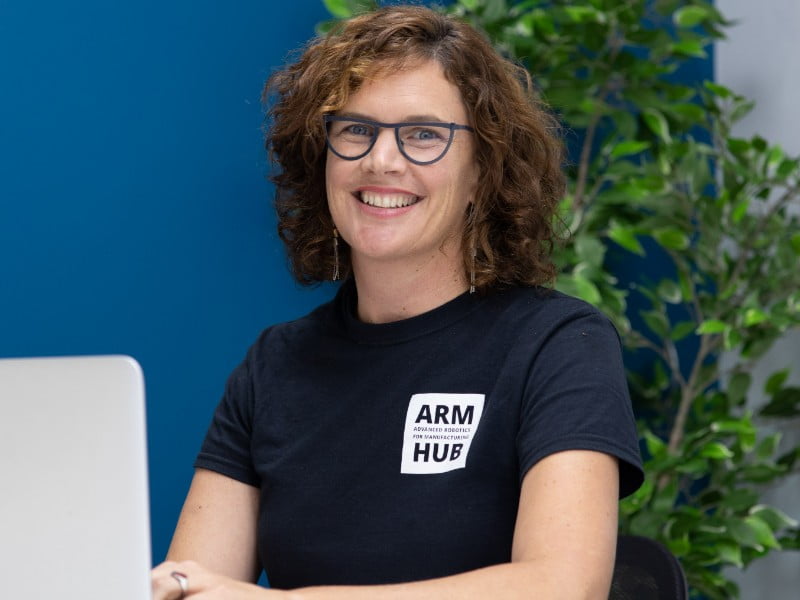Opinion: A marked upward trend in Australian manufacturing jobs to more than 900,000 occurred this month. Add to this manufacturing’s value-add in software programming, R&D, design and other supply chain inputs, manufacturing has created a further 2.5-3 jobs in other industries.
These strong figures have people puzzling: are these the skilled, long-term and secure advanced manufacturing jobs we need? Or does this reflect a short-term cyclical bounce-back in manufacturing jobs as lock-downs forced people to shift their consumption from services (such as restaurants, hotels and travel) to goods.
I am an optimist because growth is occurring across the ecosystem. Direct foreign investment is strong with Boeing and Stryker setting up new R&D and production facilities in Queensland this week.

Large and small manufacturers in all corners of the country are digitally transforming and upskilling staff. And there are manufacturing scale-ups reaching unicorn status, most recently the electric vehicle charger Tritium.
Certainly there is confidence in the Australian advanced manufacturing marketplace.
Direct foreign investment is set to continue as the shipping crisis takes root on top of existing COVID-19 supply chain disruptions drives manufacturers to look for production solutions closer to their customers.
Positively, it will fuel Australia’s ambition to value-add to our ‘dig and ship’ raw materials industries.
Critical minerals, for example, will rapidly mature to meet international demand and standards, while playing a key role in securing Australia’s sovereign manufacturing capability and contributing to a decarbonised energy future.
Australian companies like Everledger are building the foundations for critical minerals blockchain technology. And there are many significant ways in which artificial intelligence, robotics and other advanced manufacturing capabilities can continue to position Australia as global leaders in mining as well as downstream processing of resources like nickel, copper and lithium.
Importantly, these industries leverage our natural as well as competitive advantages in minerals and mining technologies, and will further support jobs and communities across Australian cities and towns.
Globally, we know R&D follows production, and on this footing Australia has paid too little attention for far too long. Companies like Canon, Huggies and Bonds took production and then R&D offshore and it essentially went unnoticed.
Incentives provided by countries for manufacturers to relocate typically prescribe the use of local R&D, and with advanced manufacturing linked to digital transformation and R&D, there are several good reasons why Australia will not become the industry’s offshore high value IT or R&D centre.
Equally, manufacturing’s local high-value artificial intelligence and data analytics jobs are not as vulnerable to cost competitive offshore solutions, in the same way untethered FinTech companies experience, for example.
As the war for talent increases, companies that locate production and R&D in Australia with a unique market advantage will be the best positioned to pay the price for talent that will deliver global market success.
Home grown Australian manufacturers have been growing too. Initially pivoting and innovating in their local supply chains in response to COVID-19, many successful companies are now building Australia’s sovereign manufacturing capabilities in strategic industries like space and medical.
Amaero International and Romar Engineering are making high-value components for space and Vaxxas and Ellume are exporting COVID-19 vaccine patches and testing kits, and putting on skilled labour that doubles and triples their workforce this year alone.
Hydrogen production is also set to rapidly scale Australia’s green energy future, among a broader mix of renewables, positioning Australia as a green manufacturing powerhouse that supports industries, jobs and communities in regional Australia.
Australia’s manufacturing growth is evidently not just an outcome of a shift from manufacturing services to greater consumption in response to COVID-19, it is also an outcome of Australia working hard because it knows manufacturing is becoming the next big global tech industry.
Sustained market and jobs growth in manufacturing will be led by the adoption of artificial intelligence and data analytics built on the foundations of wider Industry 4.0 technologies including robotics, augmented and virtual reality, and material science.
These technologies will drive a new era of manufacturing standards and regulation, like product traceability that will require human-centred ethical and explainable artificial intelligence to meet industry and customer expectations for green manufacturing, product provenance data, and robust supply chains free of slave labour.
But where is the talent to deliver Australia’s advanced manufacturing future?
The Tech Council of Australia just released a report calling for one million new tech jobs needed in Australia by 2025 to meet industry demand.
Half of these jobs will need to be found by skilling up and retaining staff, because migration and local talent development alone cannot meet demand. The remainder will come from supporting startups to scale up, and through direct foreign investment.
Australia’s growth – with now more than 900,000 manufacturing jobs – is a sign Australia’s efforts in all three domains is having the desired impact. But for high-value manufacturing jobs to continue to grow, even greater efforts will be required as the war for talent escalates.
The future of Australia lies in the rebalancing of the economy to manufacturing, to deliver high-value jobs and economic sustainability in the long run.
The independent not-for-profit company I lead, the Advanced Robotics for Manufacturing (ARM) Hub is modelled on successful international innovation intermediaries including the UK Catapult Centres and US Manufacturing Institutes.
The ARM Hub brings together the agile innovation teams required to meet industry’s skills gap, with a focus on artificial intelligence and robotics.
We partner with an extensive research network across Australia and overseas to deliver agile, project-based outcomes to strengthen and grow manufacturing supply chains, upskill the workforce, and bring new talent into businesses – from world leading researchers to early career interns.
The opportunity now is to scale the work we do to meet demand and advance the nation’s great manufacturing revival.
Cori Stewart is the Founder and Chief Executive Officer of the Advanced Robotics for Manufacturing (ARM) Hub, based in Brisbane.
Do you know more? Contact James Riley via Email.
